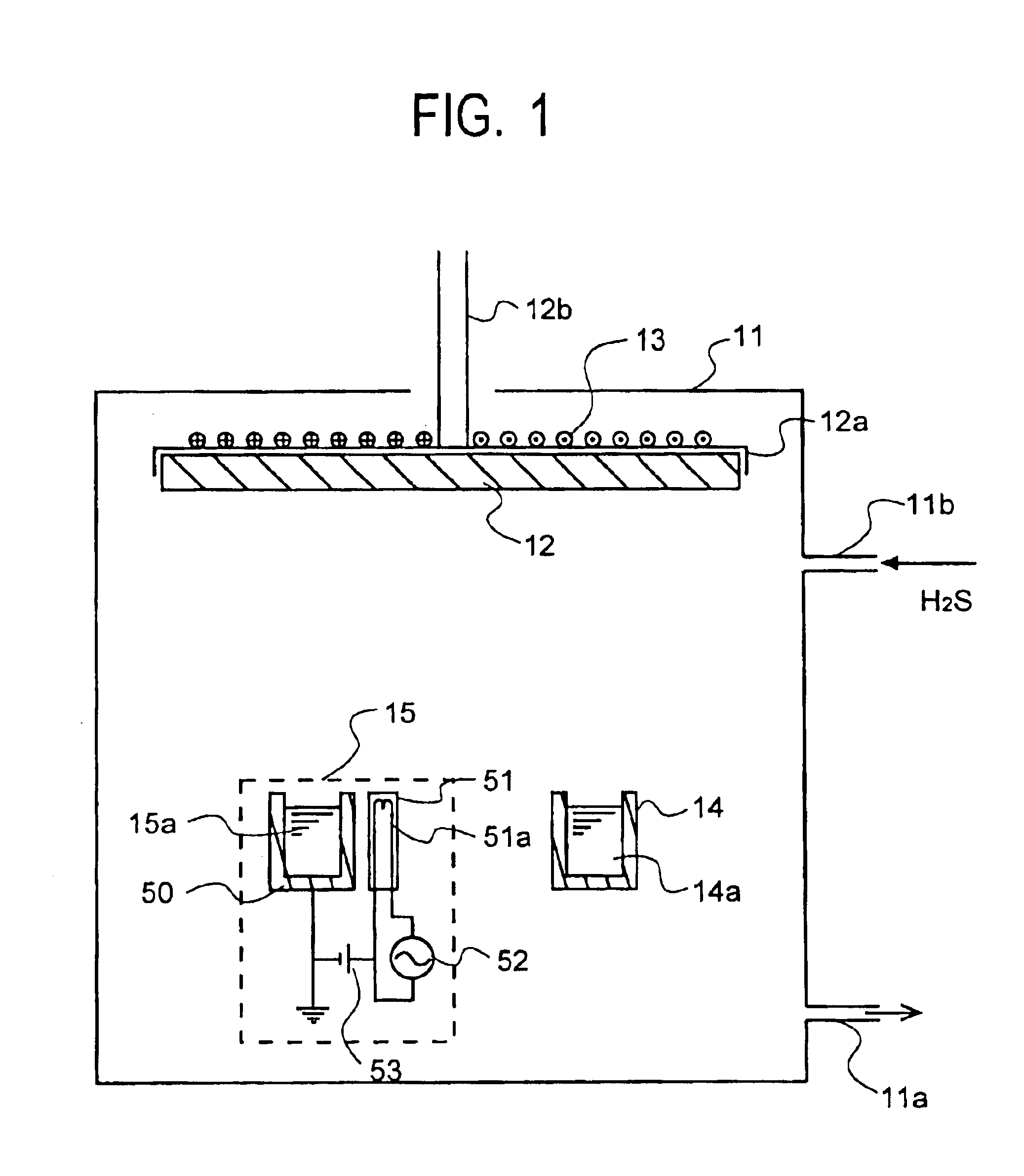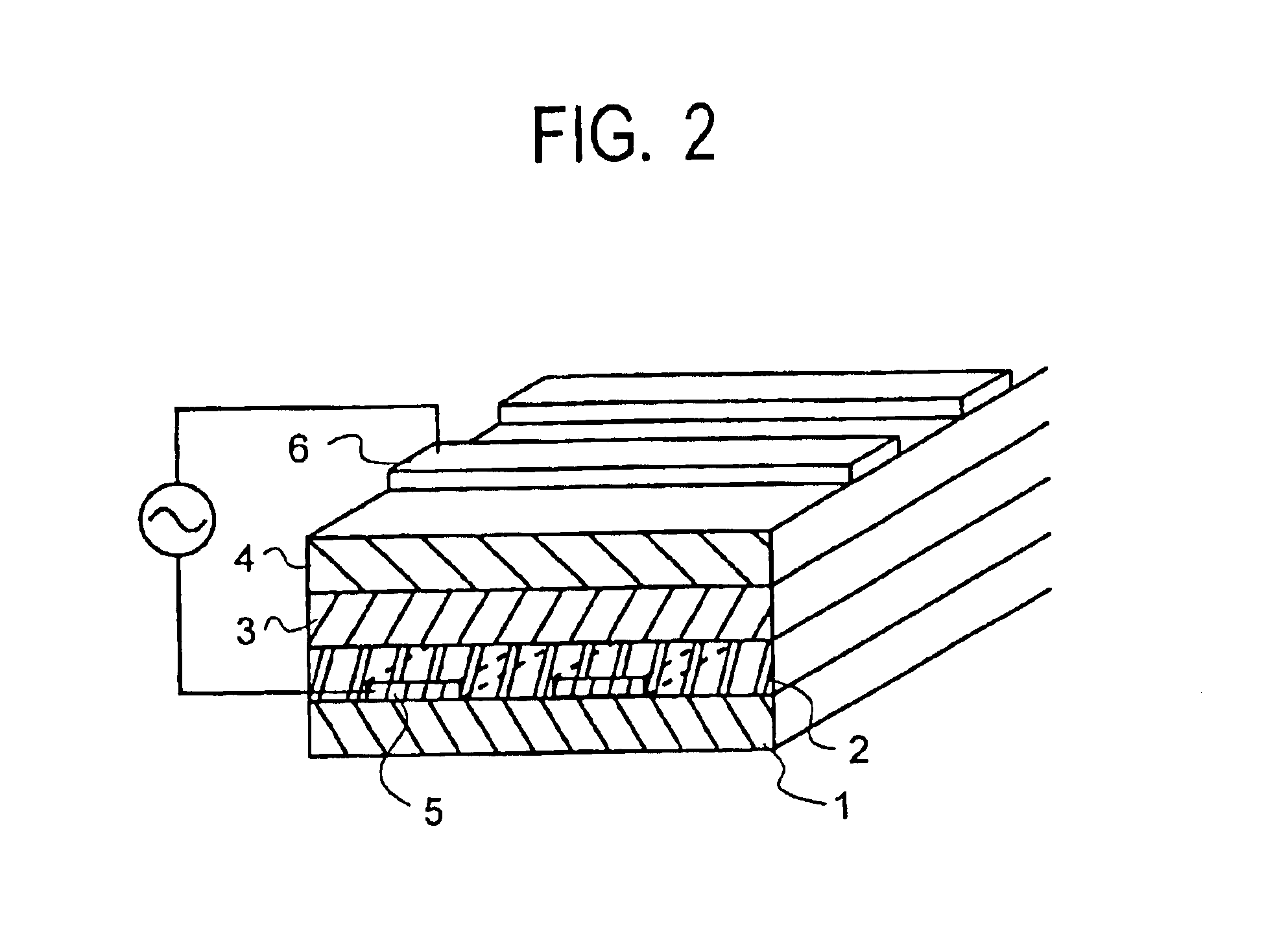Fluorescent thin film, its fabrication process, and EL panel
- Summary
- Abstract
- Description
- Claims
- Application Information
AI Technical Summary
Benefits of technology
Problems solved by technology
Method used
Image
Examples
example 1
One example of the evaporation system which may be used for the fabrication process of the present invention is shown in FIG. 1. Here two electron guns were used instead of the K-cell.
An EB source 15 having Al2S3 powders charged therein with 5 mol % of Eu added thereto and an EB source 14 having metal La charged therein were placed in a vacuum chamber 11. The Al2S3 powders and metal La were simultaneously evaporated from the respective sources, and heated to 400° C. to form a film form of LaAl2S4:Eu layer on a rotating substrate. The rate of evaporation from each evaporation source was controlled in such a way that the rate of deposition of LaAl2S4 was 1 nm / sec., and the molar ratio of La:Al2S3 was 1:1. In this example, H2S gas was introduced at 20 SCCM into the evaporation system. The thus obtained thin film was then annealed at 900° C. in vacuum for 10 minutes.
By fluorescent X-ray composition analysis, the LaAl2S4:Eu thin film was found to comprise, in atomic ratio, La:Al:S:Eu=12....
example 2
Example 1 was repeated with the exception that Nd was used instead of the rare earth metal La and Ga2S3 was used in place of Al2S3. Substantially similar results were obtained. In this example, green light was emitted.
example 3
Example 1 was repeated with the exception that Y was used instead of the rare earth metal La and In2S3 was used in place of Al2S3. Substantially similar results were obtained. In this example, red light was emitted.
PUM
| Property | Measurement | Unit |
|---|---|---|
| Fluorescence | aaaaa | aaaaa |
Abstract
Description
Claims
Application Information
 Login to View More
Login to View More - R&D Engineer
- R&D Manager
- IP Professional
- Industry Leading Data Capabilities
- Powerful AI technology
- Patent DNA Extraction
Browse by: Latest US Patents, China's latest patents, Technical Efficacy Thesaurus, Application Domain, Technology Topic, Popular Technical Reports.
© 2024 PatSnap. All rights reserved.Legal|Privacy policy|Modern Slavery Act Transparency Statement|Sitemap|About US| Contact US: help@patsnap.com










